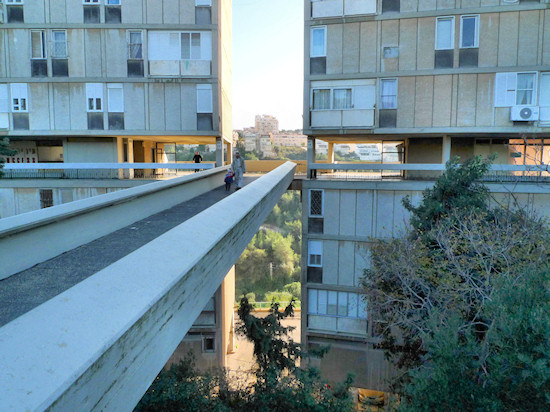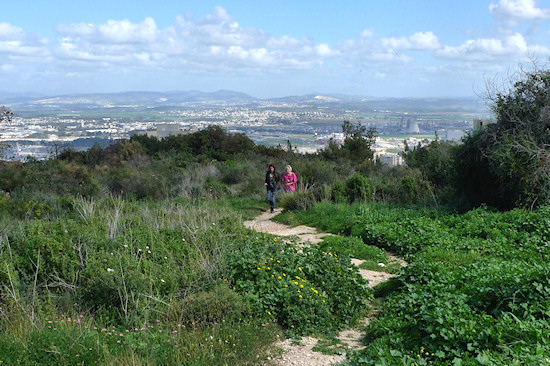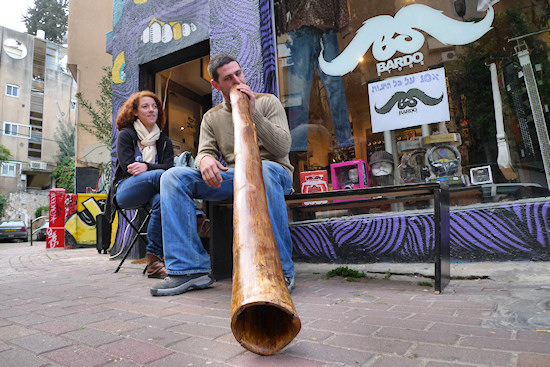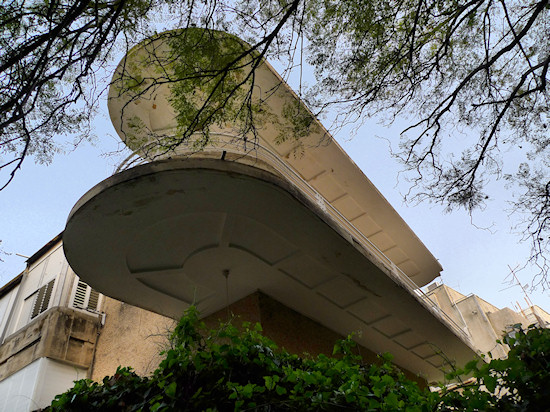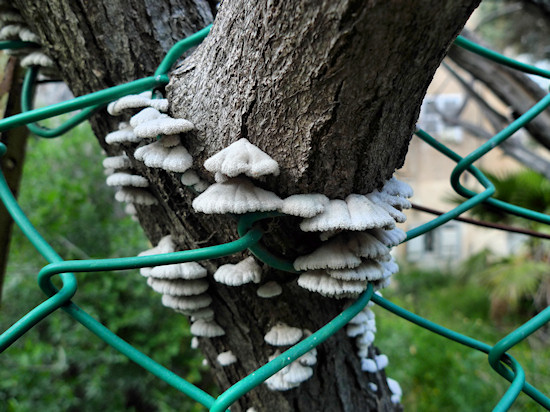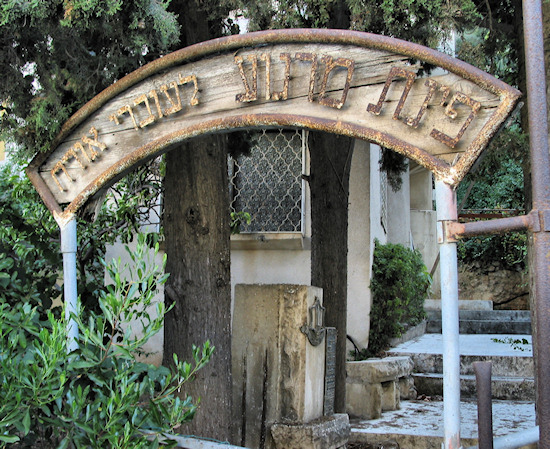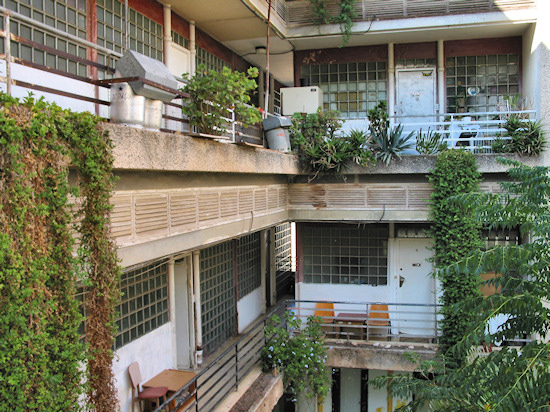Section 3: Upper Hadar and Ramat Hadar - Haifa Elegance and Mountainous Modernism | 3 Km
Starting point: Corner of Massada St. and Emek Hazeitim steps | 102m above sea level
Ending point: Corner of Leon Blum St. and Ha'Asif St. | 235m above sea level
This section of the trail begins at 6 Masada St. With the Emek HaZeitim steps behind, turn right at Masada St. and continue walking in a north-western direction. The pleasant Masada Street is today what Nordau Blvd. once was – a place to see and be seen – but in “Hadarian” terms; in other words, quite modest and accessible to those who appreciate charm. Intriguing cafes and unusual shops extend along the street where everyone is accepted as an equal. Every now and again the residents organize lively street parties – Masada St. and the parallel Hillel St. attract a young crowd and students.
After enjoying its secrets, turn left into Shmuel Steps, the first part of which is actually a wide path (the entrance is between 21 and 23 Masada St.). Gradually discover one of the more interesting features that are characteristic of the urban construction on the eastern slope of the Haifa Carmel: steps. While most of the streets in Hadar Hacarmel follow the gradient of the slope, in order to avoid unnecessary inclines, the transition from street to parallel street involves overcoming a considerable slope. These steps lend a distinctive charm to the Haifa landscape in general, and to Hadar Hacarmel in particular. Glance into the yards of the houses as you ascend Shmuel Steps. Cross Hillel St., continue up to reach Arlozorov St.
Turn left to arrive immediately at a small traffic circle.
Cross the road and walk up Bar Giora St. This is one of the most charming streets in Hadar Harcarmel with fine examples of the International style of architecture that is typical of the entire neighborhood. One of the best of these can be seen at number 21, designed in 1940 by the architect Theodor Menkes and known as the “Glass House” due to the wall of glass bricks that separate the apartments from the open corridors.
Continue up Bar Giora St. Between numbers 29 and 31 turn left and descend Atzmon Steps to reach a path that runs between the buildings – this is the upper part of Kinneret St. Turn right. From here, there is an unusual perspective of the neighborhood’s International style, as well as the special character of the buildings’ gardens on the slope. Continue on the widening Kinneret St. Before reaching Ha’poel St. (before the corner house rising above Kinneret St. and Ha’poal St.), take a breath and ascend to the right up Ka’naim Steps that lead to Bar Giora St.
At the upper end of the steps turn right on Bar Giora St. and, slightly further on, turn left into Rashi St. Rashi St. twists sharply and changes its name to Ramban St. that crosses one of the smaller wadis that join the Carmel Mountain ridge.
Turn right after number 6 (opposite 3a) and ascend the steps to reach Ba’al Shem Tov St. Turn left. The view to Haifa Bay gets better… Continue on to 18 Ba’al Shem Tov St. (opposite number 13) and turn right into Luzato Steps that emerge into Hanna Senesh St. (Hanna Senesh St. can also be accessed from Ba’al Shem Tov St. via the pavement that winds through the garden located further up the street). Turn left and continue in an upward direction. This is now the Ramat Hadar area.
Cross Hanna Senesh St. and continue up. After 22 Hanna Senesh St., a path branches off up into an open area full of wild plants. Continue on this path to catch a wonderful view of Haifa Bay and the Galilee. This is the top of one of the hills that make up the Carmel range. It is worthwhile taking the time here to stroll around and enjoy the vegetation that is typical of the Mediterranean Carmel forest. Among the trees, note the Arbutus tree in its most northerly location. Continue on the path that starts to zigzag slightly, partly with steps, until Leon Blum St. Visible opposite are particularly huge buildings, but don’t panic - they represent an Israeli attempt to realize the modernist vision of architects, such as Le Corbusier, who developed the concept of the “machine for living” – complexes of apartments in a large building that offer a variety of services to the tenants. This Israeli version was designed by the architects Munio Gitai-Weinraub and Alfred (Al) Mansfeld at the end of the 1950s. They are also a representative example of construction on the Haifa Carmel ridge – the street level is located approximately at the mid-point of the building’s height and is accessible via a bridge. There are, of course, elevators in these buildings, but in the past buildings of seven floors were constructed without elevators: from the bridge, the residents would either go up or down three floors “only.”
Turn right at the top of Leon Blum St. and cross the road on the pedestrian crossing next to the large buildings. Continue on to the traffic lights at the intersection of Kish St. and Ha’asif St. where this section of the trail ends.
There are some notable buildings near the end of this section. At the traffic lights, cross Ha’asif St. and then Kish St. At 33 Kish St. opposite is a stone building that has seen better days: it was constructed in the 1950s as a hotel, became an events hall, and was finally abandoned. Walk around the building on the right on the pavement descending on Wingate Blvd. to reach a small garden containing a memorial to merchant navy sailors lost at sea whose place of burial is unknown.
To continue on to Section 4, return to the traffic lights at Ha’asif St. and Kish St.
English translation by Roberta Neiger sponsored by the social hub for community & housing, Faculty of Architecture and Town Planning, The Technion
